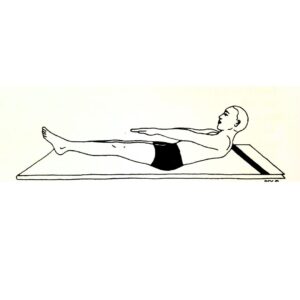What is mindfulness?
At its foundation, mindfulness entails consciously directing your attention to the current moment without judgment or distraction. This practice can be difficult in our fast-paced modern environment, yet it contains the secret to helping us overcome daily stresses and reconnect with ourselves in the digital age. We can become more sensitive to the present now by practicing mindfulness on a regular basis, allowing us to accept our lives and situations as they are now rather than obsessing on the past or worrying about the future.
Mindfulness has its roots in the East, where it has coexisted with meditation in Buddhist traditions for nearly three millennia. This practice has recently found its way to the Western world.
Scientific research has highlighted the numerous benefits of mindfulness for both the mind and body, including:
Stress and anxiety reduction
Pain relief
Improved overall health
Enhanced immune function
Mindfulness typically revolves around two fundamental elements: awareness and compassion. We’ve already touched on the first aspect, which involves being aware not only of the present moment but also of our thoughts and reactions. This awareness empowers us to regain control over our responses to different situations. By being mindful without judgment or negative thoughts, we can improve our relationship with our experiences.
Incorporating Mindfulness into your Yoga teacher training in India Practice:
With a better grasp of mindfulness and its benefits, you can begin to include mindful components into your yoga practice. Mindful yoga is all about staying present while being compassionate to yourself and, most importantly, listening to your body. Leave judgment at the door, concentrate on your own experience, and practice in a way that is comfortable for you and your body.
As yoga students, we frequently find ourselves hanging on every word of the instructor. While the teacher’s assistance is important for safety and alignment, you are the only one who truly understands your body. You alone can experience how each pose feels, what offers you comfort or discomfort, and what works best for you.
By practicing thoughtfully, you become more aware of when you need to rest, try a new yoga technique, or correct your alignment. Your ability to move thoughtfully will improve as you become more comfortable with your practice. You’ll begin moving in ways that fit you, customizing asanas to your current demands. Because of the strong link between your mind and body, you may alter your movement, breathing, and thoughts in the moment, generating a genuinely amazing experience
Incorporating Mindfulness into Your Yoga Practice: 7 Key Steps
Create a Distraction-Free Sanctuary: Establish a dedicated, serene space for your practice that is free from distractions. Make it a comfortable and safe haven where you can fully immerse yourself. To keep your focus intact, consider placing your phone within reach but out of sight, covered with a blanket and set to silent mode.
- Tune into Your Present State: Prior to delving into your practice, take a few moments to become aware of your current emotional and physical state. Observe any thoughts, emotions, or bodily sensations that may arise. If you encounter discomfort or tension in your body, acknowledge it and carry this awareness throughout your practice.
- Release Expectations: Let go of any preconceived notions or goals for your practice. Allowing your yoga teacher training in India practice to unfold naturally without expectations enables you to be fully present. Attaching expectations can lead to self-judgment if your progress doesn’t align with what you had in mind.
- Focus on Your Unique Journey: In group classes, it’s common to be drawn to the abilities of others around you, particularly those who are more advanced. However, remember that your practice is your own. Embrace your current physical and mental state without comparing it to others. Meet yourself where you are today, regardless of external influences.
- Stay Mindful Throughout: As you progress through your practice, remain attuned to your feelings and emotions. In moments when negativity surfaces, such as frustration during Warrior II, redirect your focus to your own experience and your breath. By doing so, you regain control over your reactions.
- Embrace Rest and Modification: There’s no shame in taking a break or adjusting your practice. As a yoga teacher, I emphasize the importance of resting or modifying poses when necessary. While pushing your boundaries can be beneficial, there are moments when your body and mind call for rest. Understand that rest takes different forms for each individual, whether it’s Child’s Pose, drawing your knees to your chest, or reclining in Corpse Pose. When you recognize the need for rest, choose the form that aligns with your current needs.
- Honor the Power of Savasana: One of the most vital components of any yoga practice is the time dedicated to Savasana. While it may be tempting to skip or abbreviate this phase due to time constraints, it’s crucial to let your body and mind fully relax. Savasana offers an opportunity to integrate your practice, reap its benefits, and set the tone for your experiences beyond the mat. Embrace this final step with the mindfulness it deserves



